1.2 Foundations of Neuroscience
In the introduction to neuroscience, you came across various terms, brain structures and bodily functions/processes that are frequently mentioned in neuroscience literature relevant to the study of conflict. In fact, many more neuroscience terms are used in such literature. To help you make sense of this literature and to prepare you for some later chapters that use neuroscience knowledge (e.g., Chapter 3), we will take a closer look at neuroscience and human biology in this topic. We will describe and explain various brain structures and bodily functions and note why knowing about them may be useful for conflict management scholars and practitioners.
As an introduction to the topic, you may want to watch The Chemical Mind: Crash Course Psychology #3 [10:14]:
Below, we will look at some of the structures and processes discussed in the video in more detail, starting with the smallest entity: the neuron.
Neurons
Neurons are nerve cells that are central to all our brain functions. They are the primary functional unit of the nervous system and enable communication between different brain areas as well as between the brain and other body parts. Our brains contain an estimated 85-128 billion neurons (Feldman Barrett, 2017a; Freberg, 2019).
Below, we will briefly consider key components of neurons and their functions, without going into too much detail.
Extension:
If you are interested in learning more about how neurons are made up, you may choose to watch this video [1:47]:
Neurons look a bit like a tree. They have multiple branches (called dendrites), a trunk (the axon) and roots (the axon terminal).
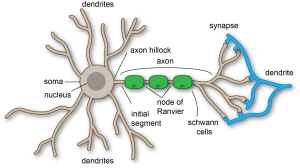
Neurons transmit electrical signals through our brain and body (we can say that the neuron “fires” to describe the action of sending a signal). When a neuron receives an electrical signal at one of its branches (dendrites) from another neuron, this signal (called action potential) travels down the “trunk” of the neuron (the axon) to its “roots” (axon terminal), from where the signal is sent (or “fired”) to the next neuron via the synapse.
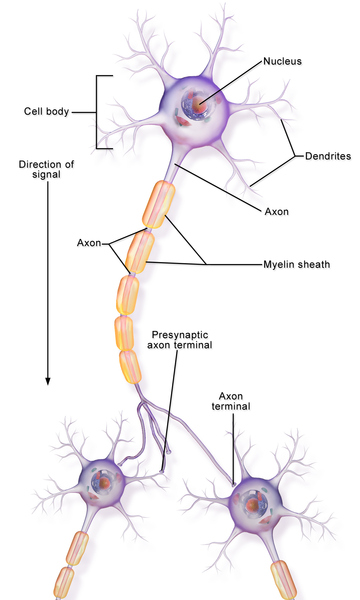
In the process, the first neuron releases chemicals into the synaptic gap, which are received by the next neuron.
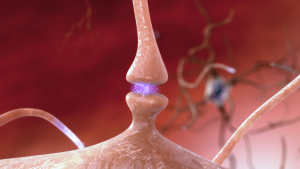
Then the process is repeated by that neuron and so on. Communication via the synaptic gap is called synaptic transmission. Understanding the gist of synaptic transmission (without the need to go into too much detail) will help you make sense of any information about neurotransmitters, which we will look at later in this chapter as well as in some subsequent chapters like Chapter 3 on emotions.
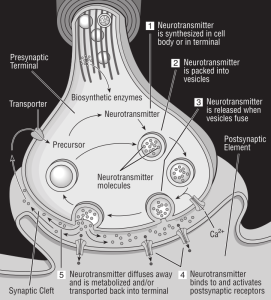
Extension:
If you want to learn more about how information is passed on from one neuron to the next via the synapse, please watch the following video [1:51]:
We will now consider how our neurons are connected.
Neural Networks
As you learned above, neurons have multiple branches (dendrites) that connect them to multiple other neurons.
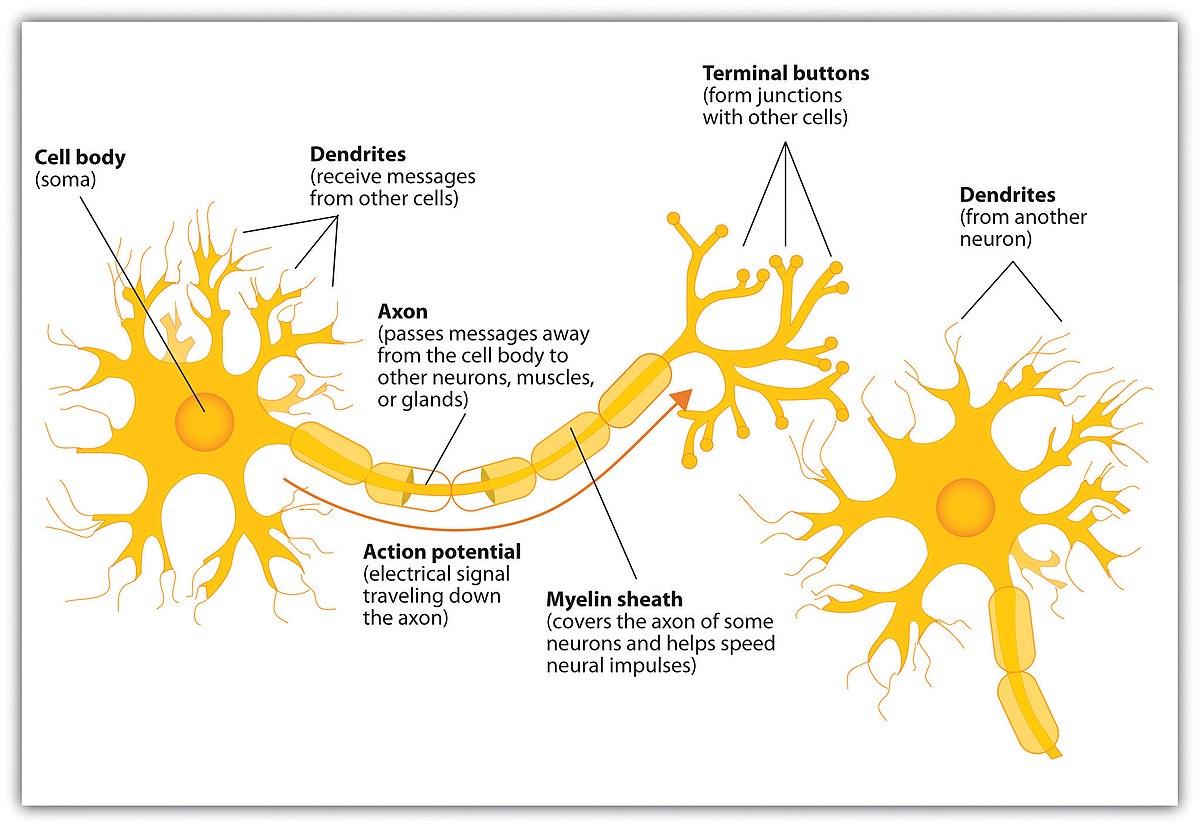
Through these connections, our neurons make up a massive, complex neuronal network (Feldman Barrett, 2017a). Some neurons are better connected than others. These close connections can be grouped as neuronal clusters. Lisa Feldman Barrett (2020), in her book, 7 and a half lessons about the brain, compares the neuronal network with the global airport system. According to Feldman Barrett, the global airport system comprises about 17,000 airports. Some of these airports are hubs, like Singapore, Dubai, Frankfurt, London Heathrow, etc. Multiple domestic and other smaller international airports connect to these hubs so that people can travel from A to B when there are no direct flights between the two locations.
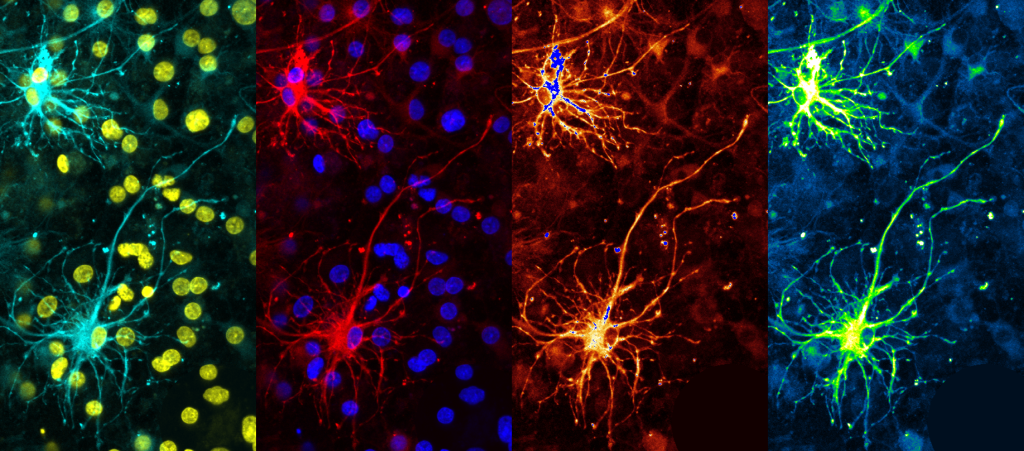
Our network of neurons is similarly organised. Not all neurons are connected with all other neurons (that would be a crazy network seeing that we have billions and billions of neurons), but many are just connected with the neurons around them, forming a local cluster, a bit like the domestic air travel system. Some of these clusters serve as “communication hubs”. They connect with other clusters via some neurons with long axons that reach far across the brain, a bit like a long-distance flight. If a hub is temporarily or permanently damaged, like a major airport shutting down, it may be possible that other neurons take over the functions of the damaged hub. In other cases, for example, when a person suffers from Parkinson’s disease, the functions may not be replicated.
Feldman Barrett (2017a) explains how the brain achieves its complexity through “degeneracy”. This term refers to “the capacity for dissimilar representations” (e.g., different sets of neurons) to give rise to instances of the same category (e.g., the experience of a particular emotion) in the same context.
Plasticity
As the analogy with an airport hub shutting down has indicated, our brain is not a static system, but it is ever-changing and evolving. The brain’s capacity to change its structures over time is called plasticity. In this process, new neuronal connections can be formed, while existing connections can be strengthened, weakened or entirely abandoned, depending on how frequently and intensely these connections are used. For example, learning, remembering, and new experiences are processes that are likely to create and strengthen connections (Gluck et al., 2020).
While our brain changes and evolves throughout our lives (Kolb & Fantie, 1989), it is important to note that the foundational neuronal wiring is done in the early childhood years of development. In other words, childhood experiences have a significant impact on the foundations of the neuronal network and changes to the network in later age are more difficult to create.
Feldman Barrett (2020) discusses that narrow-mindedness and prejudice may derive from the lack of exposure to different beliefs, skin colours, religious practices, etc. of an individual during childhood. This may help explain why some people find it more difficult than others to consider other people’s perspectives, beliefs and values. This lack of perspective-taking frequently contributes to conflict and makes conflict resolution more difficult.
To learn more about neuroplasticity and how we may use its principles to shape our own brains, please watch the following video [14:24]:
Mirror Neurons
The term mirror neurons refers to a specific type of neuron that fires both during the performance of an action and merely by observing someone else perform the action (Gluck et al., 2020; Goldstein, 2019). Mirror neurons were first discovered “by accident” in the cerebral cortex of monkeys in the early 90s. Afterwards, they were also found in the human brain, albeit with slightly different functions than those in the monkey brain. Multiple readings on neuroscience and conflict frequently praise the role that mirror neurons play in our predictions and experience of the emotions of others, including through empathy (Fitzduff, 2021; Izard, 2009; Lindner, 2014). However, other sources note that research to date is inconclusive and does not clearly assign this role to mirror neurons, so it may be best to treat readings on the value of mirror neurons with care.
To learn more about the research and about some myths about and actual functions of mirror neurons, please watch the following video [6:46]:

